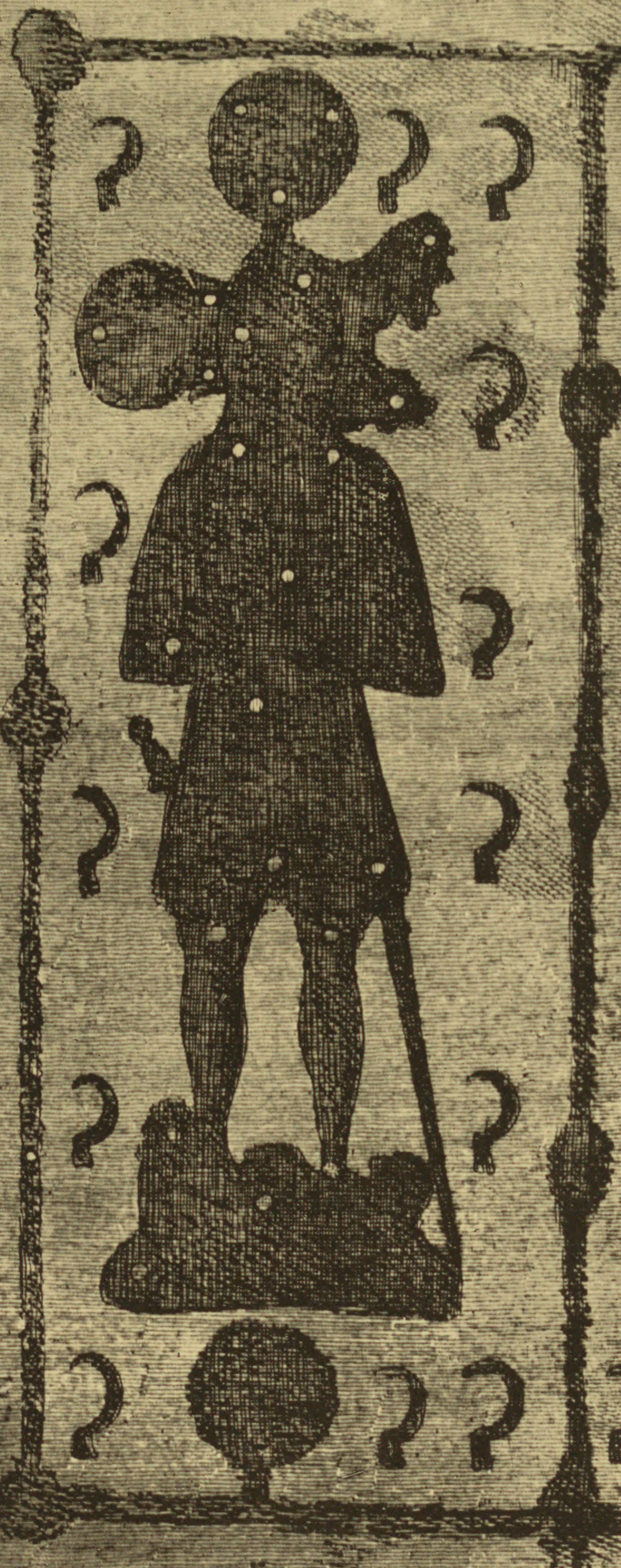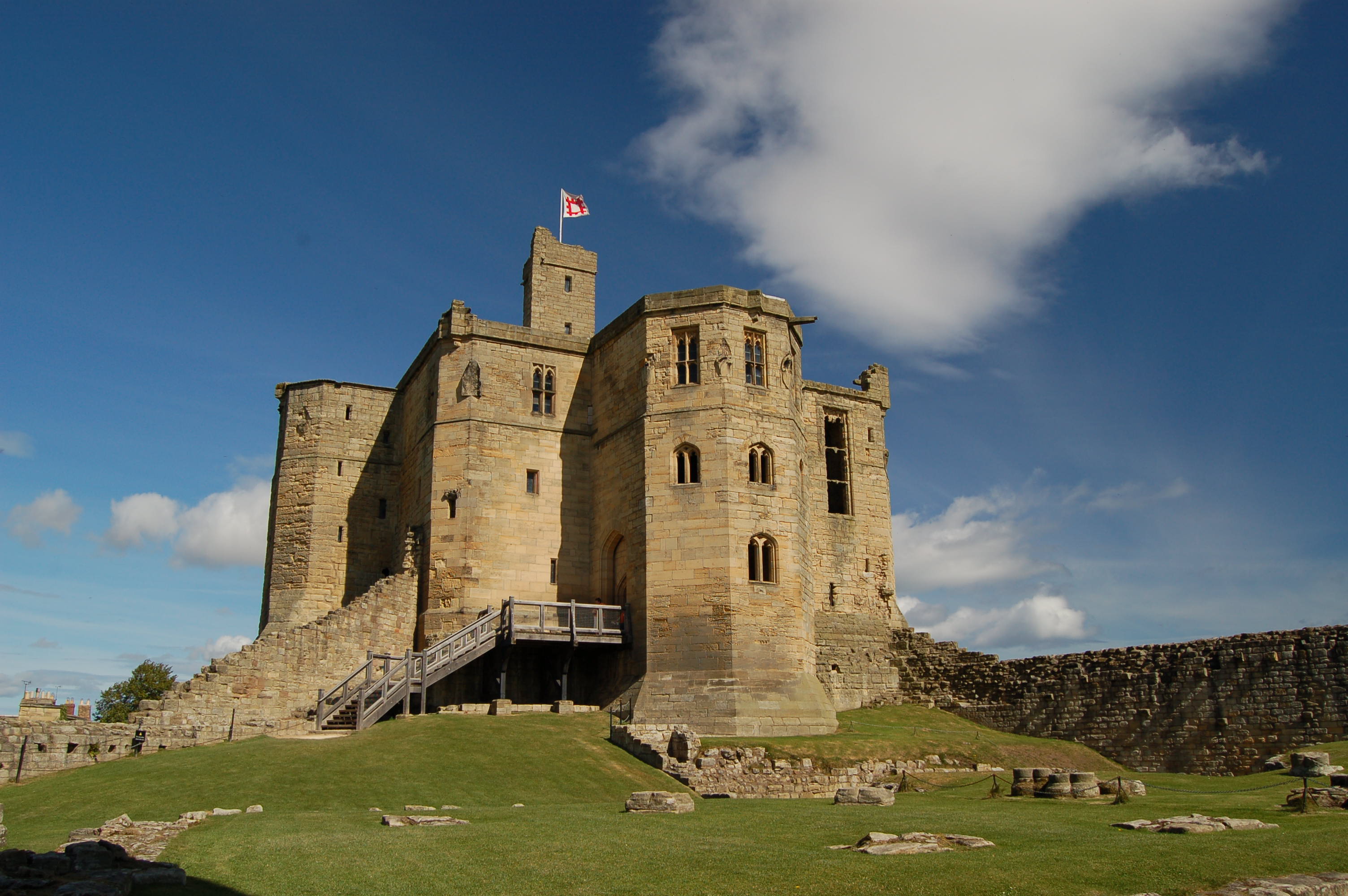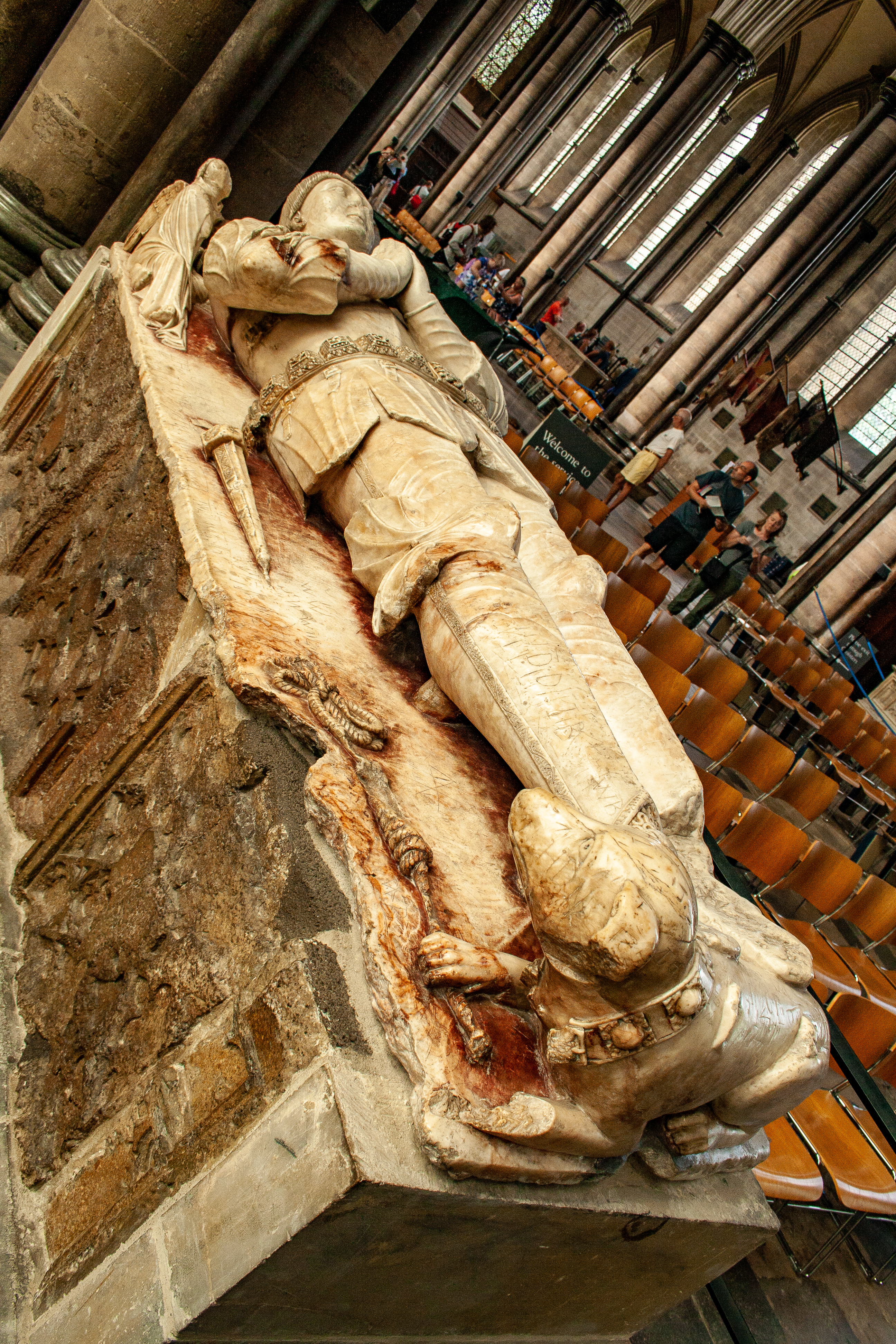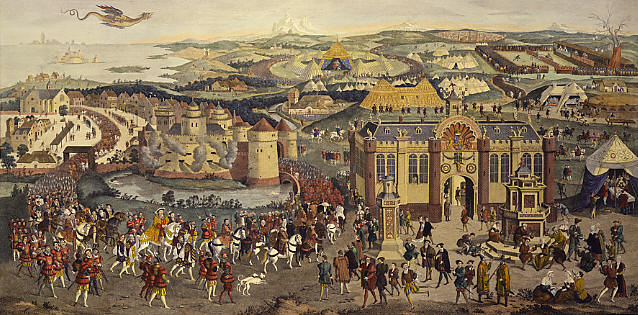|
Mary Hungerford
Mary Hungerford, Baroness Botreaux, Hungerford and Moleyns (c.1468 – before 10 July 1533) was the daughter of Sir Thomas Hungerford and Anne, daughter of Henry Percy, 3rd Earl of Northumberland. Titles Mary became ''suo jure'' 5th Baroness Botreaux on the death of her great-grandmother, Margaret Botreaux, in 1478. Mary was the great-granddaughter of Sir William Moleyns, slain at the siege of Orleans on 8 May 1429, who married, on 1 May 1423, as his second wife, Anne Whalesborough (died c. 1487), the daughter and co-heir of John Whalesborough, esquire, of Whalesborough, Cornwall, by Joan, daughter of Sir John Raleigh. By Anne Whalesborough Sir William Moleyns had two daughters, Eleanor (died c. 1492) and Frideswide. Eleanor's marriage was granted to Thomas Chaucer, esquire, and before 5 November 1440 she married Robert Hungerford, 3rd Baron Hungerford, who was beheaded at Newcastle on 17 May 1464 after the Battle of Hexham. He was attainted, as was his son, Sir Thomas Hunger ... [...More Info...] [...Related Items...] OR: [Wikipedia] [Google] [Baidu] |
Edward Hastings, 2nd Baron Hastings
Edward Hastings, 2nd Baron Hastings, KB PC (26 November 1466 – 8 November 1506) was an English peer. Origins Edward Hastings was born in Kirby Muxloe Castle, Leicestershire to Sir William Hastings, 1st Baron Hastings and Katherine Neville, the daughter of Richard Neville, 5th Earl of Salisbury, and Alice Montagu, the daughter of Thomas Montagu, 4th Earl of Salisbury. At the time of the marriage Katherine Neville was the widow of William Bonville, 6th Baron Harington (1442–1460), beheaded after the Battle of Wakefield, by whom she had a daughter, Cecily. Edward Hastings had three brothers, Sir William, Sir Richard, and George, and two sisters, Anne, who married George Talbot, 4th Earl of Shrewsbury, and Elizabeth. His brothers William and Richard were alive at the time he made his will on 4 November 1506. Career Edward Hastings was invested as a Knight of the Bath in 1475. He was High Steward of the Honour of Leicester in 1485. He was Constable of Leicester Castle 1485. ... [...More Info...] [...Related Items...] OR: [Wikipedia] [Google] [Baidu] |
Henry Stafford, 2nd Duke Of Buckingham
Henry Stafford, 2nd Duke of Buckingham, KG (4 September 1455 – 2 November 1483) was an English nobleman known as the namesake of Buckingham's rebellion, a failed but significant collection of uprisings in England and parts of Wales against Richard III of England in October 1483. He was executed without trial for his role in the uprisings. Stafford is also one of the primary suspects in the disappearance (and presumed murder) of Richard's nephews, the Princes in the Tower. Life The only son of Humphrey Stafford, Earl of Stafford and Margaret Beaufort, Countess of Stafford, Buckingham became Earl of Stafford in 1458 upon his father's death, and was made a ward of King Edward IV. He became the Duke of Buckingham at age 4 in 1460 following the death of his grandfather, Humphrey Stafford, 1st Duke of Buckingham at the Battle of Northampton. In February 1466, at age 10, he was married to Catherine Woodville, youngest sister of Edward IV's wife Elizabeth Woodville, and dau ... [...More Info...] [...Related Items...] OR: [Wikipedia] [Google] [Baidu] |
Elizabeth Mortimer
Elizabeth Mortimer, Lady Percy and Baroness Camoys (12 February 1371 – 20 April 1417), was a medieval English noblewoman, the granddaughter of Lionel of Antwerp, 1st Duke of Clarence, and great-granddaughter of King Edward III. Her first husband was Sir Henry Percy, known to history as 'Hotspur'. She married secondly Thomas Camoys, 1st Baron Camoys. She is represented as 'Kate, Lady Percy,' in Shakespeare's ''Henry IV, Part 1'', and briefly again as 'Widow Percy' in '' Henry IV, Part 2''. Family, marriages, and issue Elizabeth Mortimer was born at Usk, Monmouthshire, Wales, on 12 or 13 February 1371, the eldest daughter of Edmund Mortimer, 3rd Earl of March, and his wife, Philippa, the only child of Lionel, 1st Duke of Clarence, and Elizabeth de Burgh, Countess of Ulster. Elizabeth Mortimer had two brothers, Sir Roger (1374–1398) and Sir Edmund (1376–1409), and a younger sister, Philippa (1375–1401), who married firstly John Hastings, 3rd Earl of Pembroke (d.1389), s ... [...More Info...] [...Related Items...] OR: [Wikipedia] [Google] [Baidu] |
Henry Hotspur Percy
Sir Henry Percy (20 May 1364 – 21 July 1403), nicknamed Hotspur, was an English knight who fought in several campaigns against the Scots in the northern border and against the French during the Hundred Years' War. The nickname "Hotspur" was given to him by the Scots as a tribute to his speed in advance and readiness to attack. The heir to a leading noble family in northern England, Hotspur was one of the earliest and prime movers behind the deposition of King Richard II in favour of Henry Bolingbroke in 1399. He later fell out with the new regime and rebelled, and was slain at the Battle of Shrewsbury in 1403 at the height of his fame. Career Henry Percy was born 20 May 1364 at either Alnwick Castle or Warkworth Castle in Northumberland, the eldest son of Henry Percy, 1st Earl of Northumberland, and Margaret Neville, daughter of Ralph de Neville, 2nd Lord Neville of Raby, and Alice de Audley.; . He was knighted by King Edward III in April 1377, together with the ... [...More Info...] [...Related Items...] OR: [Wikipedia] [Google] [Baidu] |
Walter Hungerford, 1st Baron Hungerford
Walter Hungerford, 1st Baron Hungerford (1378 – 9 August 1449) was an English knight and landowner, from 1400 to 1414 a Member of the House of Commons, of which he became Speaker, then was an Admiral and peer. He won renown in the Hundred Years' War, fighting in many engagements, including the Battle of Agincourt in 1415. He was an English envoy at the Council of Constance in 1415. In 1417 he was made admiral of the fleet. On the death of Henry V he was an executor of Henry's will and a member of Protector Gloucester's council. He attended the conference at Arras in 1435, and was a Member of the House of Lords sitting as Baron Hungerford from January 1436 until his death in 1449. From 1426 to 1432, he served as Lord High Treasurer. Hungerford's tenure as Treasurer occurred during the Great Bullion Famine and the beginning of the Great Slump in England. Origins He was the only surviving son and heir of Sir Thomas Hungerford (died 1398) of Farleigh Castle in Wiltsh ... [...More Info...] [...Related Items...] OR: [Wikipedia] [Google] [Baidu] |
Eleanor Percy, Countess Of Northumberland
Eleanor Neville (c. 1398–1472) was the second daughter of Ralph de Neville, 1st Earl of Westmorland (died 1425), by his second wife, Joan Beaufort, daughter of John of Gaunt, 1st Duke of Lancaster, and Katherine Swynford. Marriage and children She was married first to Richard le Despenser, 4th Baron Burghersh, a grandson of Gaunt's younger brother Edmund of Langley, 1st Duke of York. After his early death without issue, she married Henry Percy, 2nd Earl of Northumberland (killed at the First Battle of St Albans, 1455). Eleanor and Henry had ten children: * John Percy (b. 8 July 1418) * Henry Percy, 3rd Earl of Northumberland (25 July 1421 – 29 March 1461, Battle of Towton) * Thomas Percy, 1st Baron Egremont (29 November 1422, Leconfield, Yorkshire – 10 July 1460, Battle of Northampton, England) * Lady Katherine Percy (28 May 1423 – d. aft 1475). She married Edmund Grey, 1st Earl of Kent * George Percy (24 July 1424 – 14 November 1474) * Sir Ralph Percy (1425 � ... [...More Info...] [...Related Items...] OR: [Wikipedia] [Google] [Baidu] |
Henry Percy, 2nd Earl Of Northumberland
Henry Percy, 2nd Earl of Northumberland (3 February 139322 May 1455) was an English nobleman and military commander in the lead up to the Wars of the Roses. He was the son of Henry "Hotspur" Percy, and the grandson of Henry Percy, 1st Earl of Northumberland. His father and grandfather were killed in different rebellions against Henry IV in 1403 and 1408 respectively, and the young Henry spent his minority in exile in Scotland. Only after the death of Henry IV in 1413 was he reconciled with the Crown, and in 1414 he was created Earl of Northumberland. In the following years, Northumberland occasionally served with the king in France, but his main occupation was the protection of the border to Scotland. At the same time, a feud with the Neville family was developing, particularly with Richard Neville, Earl of Salisbury. This feud became entangled with the conflict between the Dukes of York and Somerset over control of national government. The conflict culminated in the first b ... [...More Info...] [...Related Items...] OR: [Wikipedia] [Google] [Baidu] |
Robert Hungerford, 2nd Baron Hungerford
Robert Hungerford, 2nd Baron Hungerford (1409–1459) was an English landowner. The second but eldest surviving son of Walter Hungerford, 1st Baron Hungerford, he served in the Hundred Years' War, and was summoned to parliament as Baron Hungerford from 5 September 1450 to 26 May 1455. He died 14 May 1459, and in accordance with his will was buried in Salisbury Cathedral. He was succeeded by his son Robert Hungerford, 3rd Baron Hungerford (1431–1464).Lee p. 259 His mother (Catherine Peverell) and his wife Margaret, 4th Baroness Botreaux, the wealthy heiress of William de Botreaux, 3rd Baron Botreaux, added to the landed property of his family in Cornwall. His wife lived until 7 February 1478, surviving all her descendants, excepting a great-granddaughter, Mary Hastings, 4th Baroness Hungerford. Her will, dated 8 August 1476, is printed in Nicholas Harris Nicolas's ''Testamenta Vetusta'', and in Hoare's "''Modern Wiltshire, Hundred of Heytesbury''. A list of the heavy expenses ... [...More Info...] [...Related Items...] OR: [Wikipedia] [Google] [Baidu] |
Leicester
Leicester ( ) is a city status in the United Kingdom, city, Unitary authorities of England, unitary authority and the county town of Leicestershire in the East Midlands of England. It is the largest settlement in the East Midlands. The city lies on the River Soar and close to the eastern end of the National Forest, England, National Forest. It is situated to the north-east of Birmingham and Coventry, south of Nottingham and west of Peterborough. The population size has increased by 38,800 ( 11.8%) from around 329,800 in 2011 to 368,600 in 2021 making it the most populous municipality in the East Midlands region. The associated Urban area#United Kingdom, urban area is also the 11th most populous in England and the List of urban areas in the United Kingdom, 13th most populous in the United Kingdom. Leicester is at the intersection of two railway lines: the Midland Main Line and the Birmingham to London Stansted Airport line. It is also at the confluence of the M1 motorway, M1/M ... [...More Info...] [...Related Items...] OR: [Wikipedia] [Google] [Baidu] |
Morley, Derbyshire
Morley is a village and civil parish within the Borough of Erewash in Derbyshire, England. It is on the eastern side of Morley Moor, with Morley Smithy to the north. The parish church of St Matthew is a grade I listed building and stands near the (converted) Tithe Barn and dovecote of Morley Hall. The church features a wall of stained glass depicting the story of Robert of Knaresborough along the north aisle which came from Dale Abbey in 1539, home of the fine Sacheverell tombs. History Morley is first certainly mentioned in 1009, as ''(in) Moreleage'', though later copies of a 1002 document in which it appears as ''(æt) Morlege'' may be genuine. The name probably means "open ground by a moor", from Old English ''mōr'' " moor, clearing, pasture" + lẽah "open ground, clearing". In 1009 Æþelræd Unræd (King Ethelred the Unready) signed a charter at the Great Council which recognised the position and boundaries of Westune. [...More Info...] [...Related Items...] OR: [Wikipedia] [Google] [Baidu] |
Robert Radcliffe, 1st Earl Of Sussex
Robert Radcliffe, 10th Baron Fitzwalter, 1st Earl of Sussex, KG, KB, PC (c. 148327 November 1542), also spelt Radclyffe, Ratcliffe, Ratcliff, etc., was a prominent courtier and soldier during the reigns of Henry VII and Henry VIII who served as Chamberlain of the Exchequer and Lord Great Chamberlain. Family Robert Radcliffe, born about 1483, was the only son of John Radcliffe (1452-1496), 9th Baron FitzWalter, and Margaret Whetehill, widow of Thomas Walden, gentleman, and daughter of Robert Whetehill, esquire, by his wife, Joan. Radcliffe had five sisters, Mary, the wife of Sir Edward Darrell; Bridget; Ursula; Jane, a nun; and Anne, wife of Sir Walter Hobart. Career In October 1495 Robert Radcliffe's father was attainted of high treason for confederacy with the pretender, Perkin Warbeck, by which all his honours were forfeited. His life was spared, and he was imprisoned at Guisnes. After he unsuccessfully attempted to escape, he was beheaded at Calais about 24 November 149 ... [...More Info...] [...Related Items...] OR: [Wikipedia] [Google] [Baidu] |
Edward Stanley, 3rd Earl Of Derby
Edward Stanley, 3rd Earl of Derby KG (c. 10 May 1509 – 24 October 1572) was an English nobleman and politician. He reigned over the Isle of Mann until his death, and then was succeeded by his son. Early life At the age of thirteen, Edward received the titles and estates of his father, the 2nd Earl of Derby, and King Henry VIII took responsibility for bringing him up until he was of age. His commissioners, including Cardinal Thomas Wolsey, were responsible for most of his affairs. In 1528, he accompanied Cardinal Wolsey on a mission to France, and in 1530, he was one of the peers who gave Pope Clement VII the declaration regarding Henry's divorce from Catherine of Aragon. Marriages and issue That same year Thomas Howard, 3rd Duke of Norfolk bought the remaining year of Edward Stanley's wardship and married him, without the King's permission, to his daughter, Katherine Howard. The King rebuked Norfolk, but allowed the marriage. Katherine fell victim to the plague a few ... [...More Info...] [...Related Items...] OR: [Wikipedia] [Google] [Baidu] |







